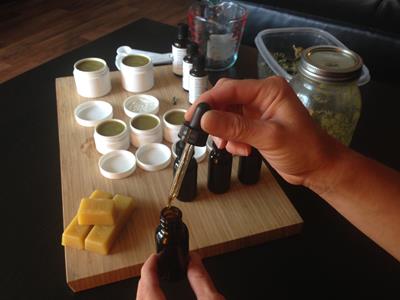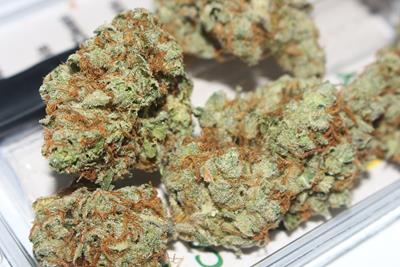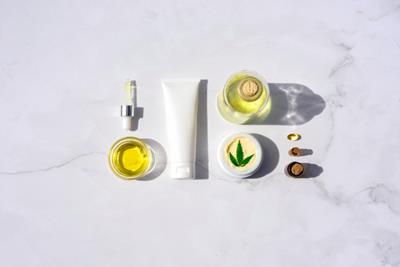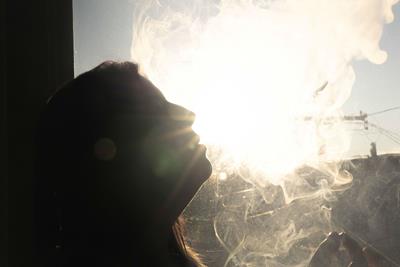
Saturday February 21, 2015
Updated on 8/2/2021
 Health/Science
Health/Science
Of the many ways to administer cannabis, by far the safest method is through topical application. Though it will not produce the characteristic "high" associated with either eating or inhaling it, cannabis creams and ointments can be a very effective way to get beneficial cannabinoids into the cells that need them the most.
Though research on the subject is minimal, one study, published by the US National Library of Medicine, found both CB1 and CB2 receptors to be located in many areas of human skin, including hair follicles, sweat glands and nerve fiber bundles. This finding implies that the chemical compounds found in cannabis can directly affect these receptors without requiring a pass through the blood/brain barrier thus keeping the user from feeling "stoned".
Topical cannabis is becoming an increasingly popular option for those who wish to avoid the psychotropic effects of cannabis (or those who might otherwise be sensitive to them such as pediatric and elderly patients) because it has the same therapeutic benefits for pain and inflammation without the high. In 2010, Gw Pharma patented the idea, noting its apparent therapeutic benefits.
"It has previously been shown that cannabinoid-containing plant extracts can be used either alone or in combination to usefully treat various diseases and conditions. These data presented herein provide evidence for the use of cannabinoid-containing plant extracts for the treatment of diseases and conditions that are alleviated by blockade of the TRP channels."
Using cannabis topically is not a new idea, however. Many cultures have been using cannabis topically for centuries to treat burns, skin infections, and wounds. The ancient Chinese emperor, Shin-Nung (2700 B.C.), for example, used cannabis to treat his people, thus earning him the title, "Father of Chinese Medicine".
Cannabis has been used topically throughout history for such things as bath additives, pain and itch relief and antiseptic ointments. Though the results of using topical cannabis has been purely anecdotal, an abundance of ailments seem to be relieved -- if not cured -- through the use of topical cannabis therapy.
Different Uses for Cannabis Topicals
-
Burn treatment:
There are many reports of people using cannabis topically to treat burns, such as the case in which a burn from a car exhaust was treated with cannabis oil on one half and antibiotic cream on the other. After only a few days, the side of the burn that was treated with cannabis was healing significantly faster than the other half. -
Pain management:
The same chemicals in cannabis that reduce pain when ingested have been shown to reduce pain when administered topically. The medication offers fast-acting, location-specific pain relief without causing the wonky feelings of being stoned. -
Anti-inflammatory:
Swollen joints are painful, and can greatly reduce one's over-all quality of life. By applying cannabis tincture directly to the inflamed areas, users have reportedly experienced less pain throughout the day and an easier time sleeping at night. This is especially important for those who suffer from rheumatoid arthritis. -
Treatment for skin infections:
There are many types of skin infections --both bacterial and fungal -- that seem to improve with cannabis. This will work for oral infections (such as an abscess tooth or canker sore) in addition to other infections like herpes or infected hair follicles. -
Improve skin elasticity:
Unlike smoking cannabis (which produces carcinogens and damages skin) applying cannabis topically can actually improve the health of your skin, resulting in improved elasticity, reduced acne and more youthful-looking skin. -
Increase sexual pleasure:
Female genetalia is very porous, which makes it an excellent site through which to administer topical cannabis. Cashing in on this concept are Evos and Foria who have created a personal lubricant by mixing highly concentrated cannabis oil with coconut oil and water (which makes for a very interesting time in the sack; a "heightened" sexual experience, if you will). -
Shrink skin abnormalities:
Skin abnormalities such as warts and moles come from within the body. Applying a cannabis tincture to the surface, however, then covering it with a waterproof bandage and leaving it to rest for a few days can rid the area of the imperfection or reduce the size of the abnormality by targeting the cells that produce it. -
Cancer treatment:
As devastating of a disease as cancer is, its growth process is pretty basic; abnormal cells begin growing out of control, essentially ignoring their instructions from the protein p53 to self-destruct. Cannabis seems to work with the body to slow the growth of these cells and, in some cases, cause their destruction.
Final Thoughts on Topical Marijuana
Evidence suggests that topical cannabis could treat a multitude of additional ailments including migraine pain, psoriasis, menstrual cramps, excessive itching and bug bites. Just remember to avoid contact with eyes and opened wounds when experimenting with topical cannabis, and seed medical attention for anything that might be serious.
Topical cannabis has proven to be a very beneficial medication for many different ailments. If you would like to try topical marijuana for yourself, simply make your own tincture using either alcohol or lipids. First, decarboxilate your weed at a temperature of around 200 to 300 degrees to bring out the cannabinoids, then either cook or soak the cannabis for the required amount of time. From here, you can add creams and fragrances, or begin using it as is.
If you would rather leave the process to the professionals, check your local dispensary for available products such as Apothecanna or Mary Jane's Medicinals. These "high" quality products are an affordable, consistent way to get cannabinoids into the body without risking the high.
Have you ever tried topical cannabis? Tell us about your experience.
Photo Credit: High Country Cannabis Tours







